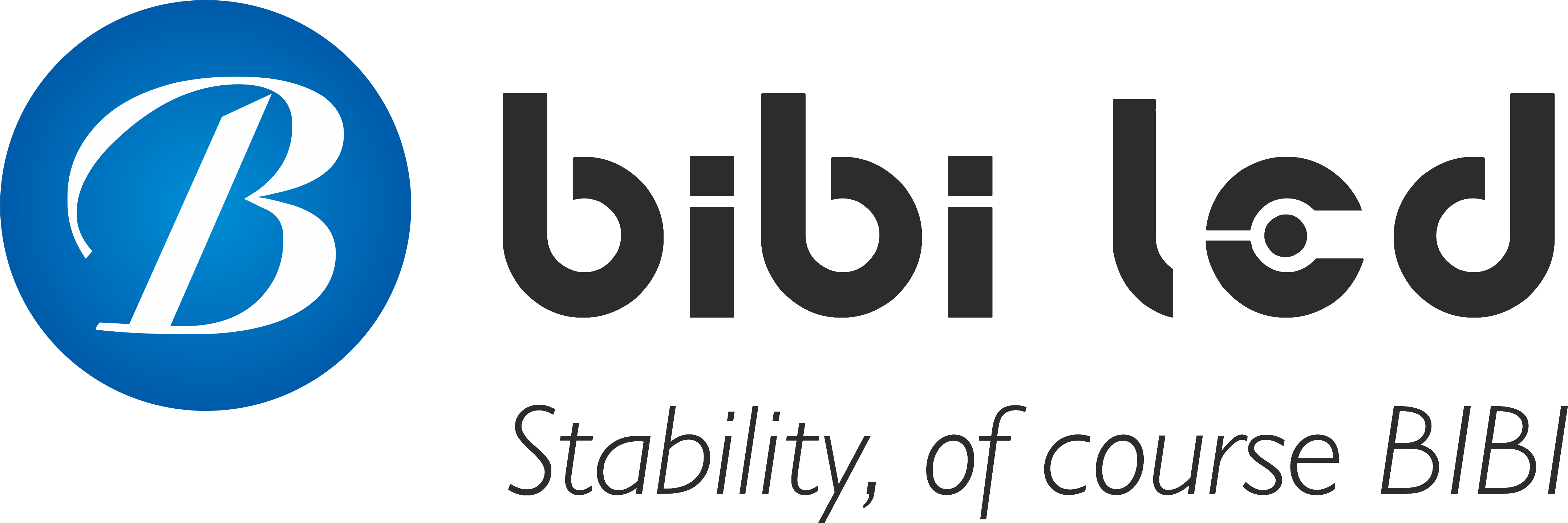序章
In today’s interview programs, LED表示画面 have become a key element in shaping visual effects. But do you know? Choosing a suitable LED display screen is not a simple matter.
It not only needs to be perfectly adapted to the studio space but also needs to accurately present the details of the interview and even play an important role in the interactive link.
So, what kind of LED display screen can meet the needs of interview programs?
目次
Requirement 1: Adaptation of LED display screen to interview scene

1). Matching the studio space layout with the display screen size
In the interview studio, the size of the LED display screen must be selected according to the size of the space.
Small interview rooms are generally not large, about 50 square meters, and there are not many viewers. At this time, it is quite appropriate to choose a 100 to 150-inch LED display screen.
For example, a small interview room of 30 square meters can get a 130-inch display screen with a dot pitch of P1.53. This size will neither make the screen too large nor make people see it clearly.
If it is a large studio, the place will be much more spacious, with an area of at least 100 square meters and many viewers. At this time, the display screen should be larger, at least 300 square meters.
The dot pitch can be P2, P2.5 or P3. For example, in a 500 square meter studio, a P2.5 display screen with a diagonal of about 8.5 meters can be installed so that audiences far away can also see clearly.
When choosing the size of the display screen, other factors must be considered. For example, how far away is the audience from the screen?
Generally speaking, 1.5 to 3 times the height of the screen is a more appropriate 視聴距離.
If the screen height is 2 meters, the audience is better off watching it from a distance of 3 to 6 meters.
If high-definition pictures, text or fine videos are to be displayed in the interview, the dot pitch must be smaller, and the 解決 must be higher.
Of course, the budget is also important. The larger the screen and the smaller the dot pitch, the higher the price. If the budget is limited, you have to find a balance between size and clarity.
2). The fit between the screen ratio and the content of the interview
In terms of the screen ratio, foreign talk shows also provide many cases worth learning from. For example, the recording site of “The Oprah Talk Show” usually adopts a 16:9 screen ratio.
This ratio can better show the full or half-body image of the guest while also showing elements related to the theme of the program in the background.
This design not only makes the image of the guest more prominent but also enhances the visual effect and information transmission effect of the program through background information.
In the British program “Richard and Judy Book Club,” a similar 16:9 screen ratio is also used, in which the two hosts and guests sit together.
This layout not only makes the audience feel a relaxed interview atmosphere but also shows more interactive details through the advantages of the screen ratio.
In contrast, the 4:3 screen ratio is rarely used in modern talk shows because it may make the guest image appear cramped, and the display space for background information is relatively limited.
These cases show that the 16:9 screen ratio is more suitable for modern talk shows. It can better show the image of the guest while leaving enough space for background information, making the overall picture more harmonious and beautiful.
Requirement 2: LED display screen for the presentation of interview details
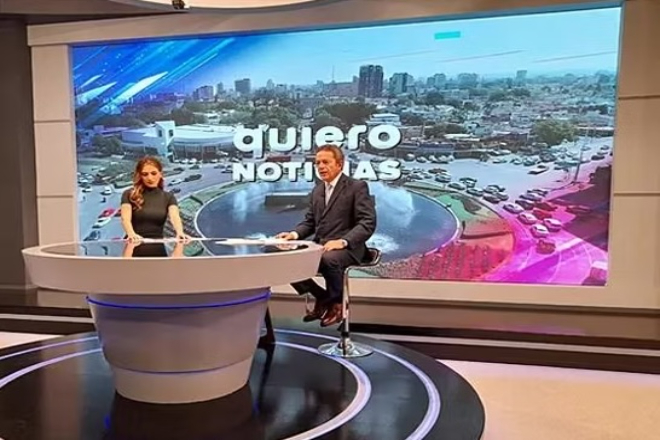
1). 高い 解決 clearly displays interview details
Imagine that you are watching an interview program, and the guests have rich expressions and vivid gestures.
If the screen resolution is not high enough, these details may become blurred, and the audience will find it difficult to feel the atmosphere of the scene.
But with 4K or even 8K high-resolution LED displays, the situation is very different!
The 4K display can already make the picture quite delicate, and every expression and every look on the guest’s face can be seen clearly.
The 8K display is even more powerful; its pixel density is four times that of 4K, and the details are richer.
For example, a smile at the corner of the guest’s mouth, a little flicker in the eyes, these subtle details can be perfectly captured, and the audience can feel the emotional changes of the guest as if they were sitting on the scene.
Let’s take a look at the difference between displays with different resolutions. If you use an ordinary 1080p screen, the guest’s expression may look a little blurry, and a lot of background details will be lost.
However, with a 4K or 8K screen, the picture becomes much clearer, and the background decoration and lighting effects can be seen clearly.
Moreover, high-resolution screens are also very friendly to post-production. When editing, you can crop and enlarge the picture more freely without worrying about losing details.
2). Picture quality optimization technology improves visual quality
In addition to high resolution, modern LED displays also have a lot of “black technology” to improve picture quality.
For example, HDR technology can make the color of the picture more vivid, and the light and shadow effects more realistic.
In the interview program, the skin color of the guests will look more natural, and the background lights and shadows will be more layered.
Dynamic contrast enhancement technology is also very powerful. It can automatically adjust the brightness and contrast according to the content of the picture so that the picture can maintain the best effect in different scenes.
For example, when the interview scene switches from a bright interior to a darker background, the dynamic contrast technology can quickly adjust so that the picture is neither overexposed nor too dark.
These technologies are also very helpful for post-production. For example, HDR technology is very compatible with special effects production.
Post-production personnel can easily adjust the picture when editing and adding special effects so that the entire program can maintain high quality from shooting to broadcasting.
In short, with these technologies, the interview program not only looks more comfortable but is also more convenient to produce, and the picture quality can be consistent from beginning to end.
Requirement 3: Adaptability of LED display screen to interview environment
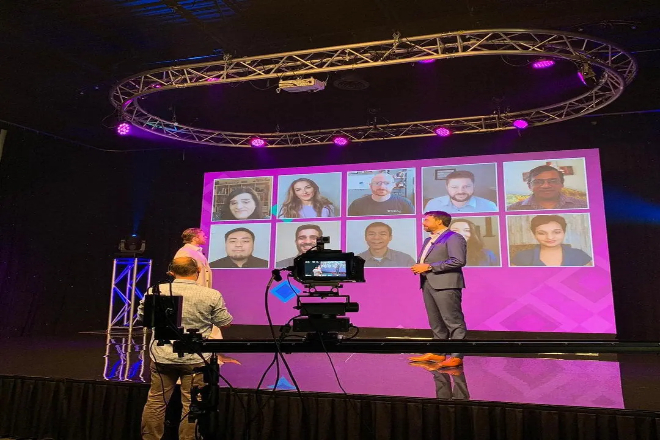
1). Flexibility of 輝度 adjustment in the interview venue
Imagine that you are doing an interview indoors, and the sun shines through the window. The soft natural light makes the picture look comfortable.
But if the light is too bright, the screen will reflect light, and the audience will feel uncomfortable.
At this time, the brightness adjustment function of the LED display screen comes in handy. You can lower the brightness to make the picture look more natural.
For example, in the studio, the light is very bright. If the screen is not brighter, the picture will appear very dark, and the details will not be clear.
At this time, the brightness will be turned up, and the picture will be much clearer.
If you go outdoors and the sun is very strong, the brightness of the display screen must be adjusted to the highest level so that it can “fight” the sun and let the audience see clearly.
Today’s LED display screens are very smart, and some can even automatically sense the ambient light intensity and automatically adjust the brightness.
For example, when recording a program outdoors, the display screen brightness is adjusted to more than 1000 nits, and the picture is still clear.
This brightness adjustment function can not only avoid the problem of reflection or being too dark but also make the audience feel comfortable and not tired.
2). The impact of contrast on the layering of interview images
In simple terms, contrast is the difference between the brightest and darkest parts of the image.
A high-contrast display can make the image more layered and look more three-dimensional.
For example, if the background is dark and the guest is bright, a high-contrast screen can make the guest’s facial expressions and gestures clearer, and the details of the background will not be lost.
On the contrary, if the contrast is low, the image will appear gray, the background and foreground cannot be distinguished, and the audience will have difficulty watching.
High-contrast images can not only reduce visual fatigue but also make the audience more focused.
Because the image is clearly layered, the audience’s eyes do not need to work hard to distinguish the image content, so they will naturally not be so tired.
In general, the brightness adjustment and high-contrast functions of the LED display are like “lighting” and “coloring” for the interview program so that the image can look comfortable in various environments, and the audience can watch the program more attentively.
Requirement 4: LED display and interview content presentation
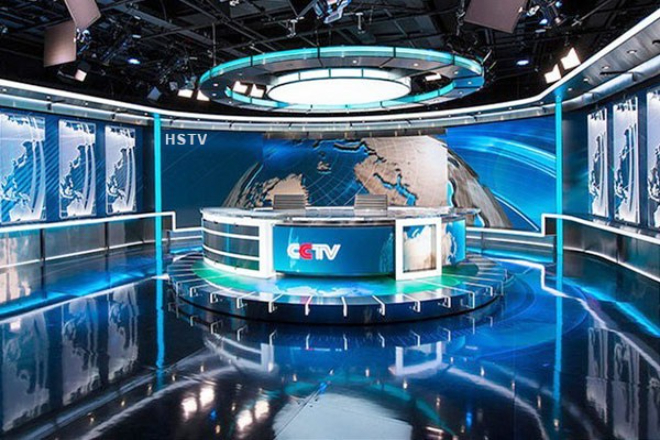
1). Smoothness of content switching in interview programs
In interview programs, content switching is commonplace. Guest introduction, topic switching, on-site interaction…
If the screen switching is not smooth, the picture is stuck or flickering, and the audience will definitely feel uncomfortable.
It’s like you are watching a wonderful movie, and suddenly, the picture is stuck. How uncomfortable it feels!
The LED display screens on the market now, especially those high-end ones, are like silky chocolate when switching content, without any lag.
For example, the screen リフレッシュレート of some brands can reach 120Hz or even higher, and the picture switching is as smooth as running water.
Moreover, these screens can automatically adjust parameters according to different scenarios, such as automatically switching to low-latency mode when playing videos to ensure smooth pictures.
However, there are still differences in the switching speed of screens of different brands and models.
The response time of high-end models can be less than 1 ms, and switching pictures is like magic, which is completed instantly.
However, some ordinary screens may be a little “stuck” when switching quickly, and even screen tearing may occur.
This difference has a significant impact on the rhythm of the program, especially in fast-paced interview programs. If the picture is stuck, the audience’s attention will be diverted.
2). Interactive functions enhance audience participation
Nowadays, talk shows increasingly focus on interaction, and LED displays are very useful in this regard.
For example, functions such as audience voting, real-time comment display, and guest interactive games can make the audience feel more involved.
Imagine that the audience can vote through their mobile phones, and the results are displayed on the screen in real-time. Isn’t this interactive feeling very strong?
For example, in some talk shows, guests and audiences can play interactive games through the screen, which the audience will find particularly interesting.
This interactive function not only increases the fun of the program but also makes the audience feel that they are also part of the program.
There are also some successful cases. For example, AOC customized an LED display for the “Biodiversity Experience Hall” of a wetland science research institute, which supports image capture, enlargement, overlay and seamless switching.
This screen can be used to display the audience’s real-time comments or the interactive content of the guests in the talk show so that the audience feels that they are also part of the program.
Requirement 5: LED display and talk show cost control
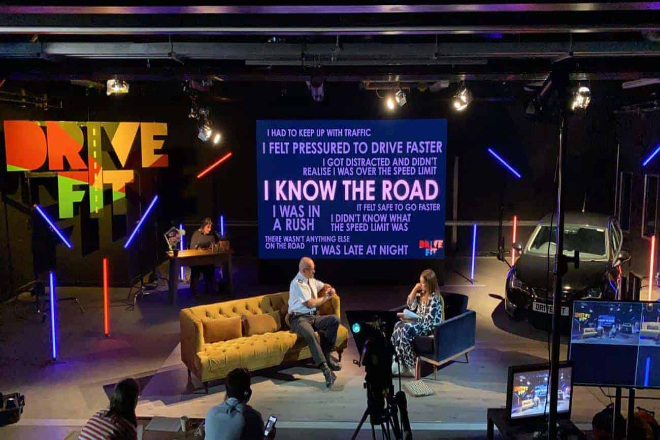
1). インストール方法
There are several common ways to install LED screens: hanging, wall mounting and ground bracket.
The hanging installation looks quite high-end, and the screen is “floating” down from the ceiling. It is especially suitable for large studios, and the visual effect is superb.
However, a professional team is required for installation, and a lot of equipment is required, so the cost goes up immediately. If the screen is broken, it is also troublesome to repair it, and it has to be taken down from the air, which is time-consuming and laborious.
Wall mounting is much simpler. The screen is directly hung on the wall, which does not take up space and is especially suitable for small venues.
For example, a small interview room of only a few dozen square meters is the most suitable for wall mounting.
However, if the wall is not strong, it may not be able to support the weight of the screen, and the entire screen must be removed for maintenance, which is not convenient.
The ground bracket is the most flexible. The screen is placed on the bracket and can be moved anywhere you want.
It is especially suitable for outdoor programs or places where the venue is frequently changed.
However, it will take up some ground space, and if the venue is uneven, the screen may shake, and the stability is slightly poor.
In short, which installation method to choose depends on the size of the venue and the budget. Small venues choose wall mounting, large studios choose to hang, and outdoor ground brackets each have their own advantages.
2). Maintenance cost
After using the LED screen for a long time, it is inevitable that there will be some minor problems.
For example, dust easily accumulates on the surface of the screen, and the picture looks blurry, or the color and brightness are inconsistent, which affects the visual effect. These need regular maintenance.
Cleaning the screen is necessary; otherwise, the picture quality will be poor if there is too much dust.
Some high-end screens have an automatic calibration function, which can automatically adjust the color and brightness, making it much easier to use.
If the screen fails, it is also important to check and repair it in time; otherwise, it may delay the program recording.
The maintenance cost is actually quite critical. If you don’t pay attention to maintenance, the screen will easily break. At that time, it will cost a lot to replace parts or replace the screen.
But if you choose good quality equipment and maintain it well at ordinary times, you can save a lot of trouble and extend the service life of the screen.
Therefore, by rationally planning the budget, choosing the right equipment, and doing a good job of maintenance, you can control the cost while ensuring the program’s effect.
Requirement 6: Visual coordination between LED display and interview program
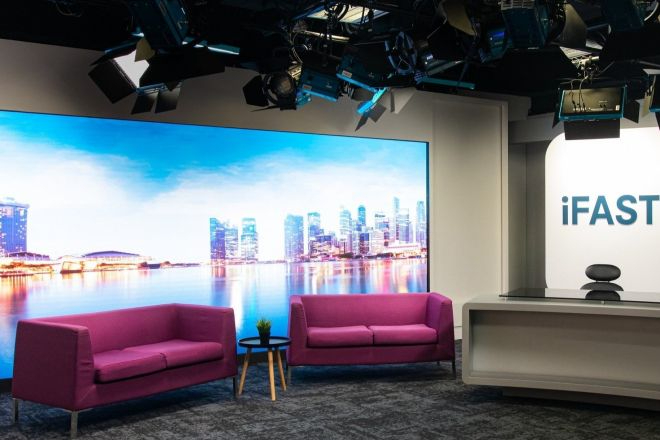
1). Collaboration with the camera
The LED display and the camera must be on the same channel. If the camera shoots high-definition images, but the resolution of the LED display is too low, the image will be blurry, and the audience will feel uncomfortable.
Problems are also prone to occur between devices of different brands. Some LED displays may not be compatible with the camera signal, and the image will flicker, or the color will be wrong.
The solution is not difficult. You can use a signal converter or choose an LED display with good compatibility. In this way, the devices can communicate well.
2). Coordination with the lighting system
The LED display and the lighting must also be coordinated well. If the light is too bright, the screen will be overexposed, and the picture will be white; if the light is too dark, the screen will appear gray.
Therefore, the brightness of the light and the display must be adjusted to each other. For example, when the light is on, the brightness of the display must be slightly lowered so that the picture will not be dazzling.
The color of the light is also critical. If the light is cold, the display must also be adjusted accordingly. Otherwise, the color will appear particularly abrupt.
Moreover, the layout of the light is also very important. The brightness of the display must be measured in advance, and the angle and intensity of the light must be adjusted according to the program requirements.
In this way, the picture will look comfortable, and the audience will be happy to watch it.
In short, the LED display screen, camera and lighting must be well coordinated to make the picture look good and the program effect good.
7. 結論
Through the above comprehensive analysis of the requirements of LED display screens in the production of interview programs, we can see that choosing a suitable display screen is not only related to the visual effect but also to the overall quality of the program and the experience of the audience.
I hope that the introduction of this article can provide a valuable reference for the program production team and help everyone create a more attractive interview program.
最後に、LEDディスプレイスクリーンについてさらに詳しく知りたい場合は、 ご連絡ください。
